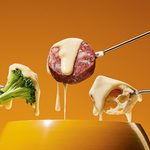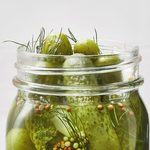Become a Better Cook
Contrary to popular opinion cooking doesn’t have to be a mysterious art: you don’t need to watch the Iron Chef, or know the names of fine cheese to make a good meal. Here are some basic tips to help you take control of the kitchen and produce some fine cooking.
Ignore the Hype-YOU Can Cook
Cooking isn’t an exotic art practiced only by cultists, although there are plenty of take-out restaurants, eat-in restaurants, delis, supermarket deli sections, and mini-marts that profit when you think that way. According to government statistics, almost half of U.S. consumers’ food budget, and just under a third of Canadians’, goes for meals prepared outside the home. Julia Child, the noted cook and cookbook author who brought detailed instructions for French cooking to American readers, took issue with the idea of cooking as a pastime open only to a few. “If you can read, you can cook,” she wrote.
Get a Back-To-Basics Cookbook
Julia Child’s statement may not be terribly reassuring to people who have no idea where to start reading-there is an incredible array of cookbooks on the market, after all, and often they only further intimidate the novice. If you want to learn to cook, don’t start with one of the just-published, hyped-up, fancy-schmancy cookbooks prominently displayed in bookstores. You need a basic, nuts-and-bolts guide, one that will explain something as obvious to an experienced cook as “roast” or “sauté” or “braise.” Here’s a recommendation: Joy of Cooking. It has been around since 1931 and has gone through six editions in order to keep up with changing North American tastes. The older editions explain how to can vegetables and make pickles, jams, and jellies. The latest edition doesn’t have those sections, but it explains the basics of many dishes from ethnic cuisines that were practically unknown in North America decades ago. There are other good basic cookbooks, but few as comprehensive as Joy. Once you have obtained a basic book, then just follow the advice of Alice B. Toklas, an author of another sort of cookbook-the kind that’s fun to dip into to supplement the basics. “The only way to learn to cook is to cook,” she wrote in 1954 in The Alice B. Toklas Cookbook.
Find Out What Foods Your Family Likes
Nothing will boost your confidence in your cooking skills more than having satisfied customers-that is, family members who are happy with what they are eating. While it helps to ask everyone what their favorite dishes are, and even get them involved in menu planning, you can’t always trust what people say off the top of their head when asked a broad question like “What kind of dishes do you like for dinner?” A more reliable way is to observe what dishes your family enjoys at restaurants or at someone else’s house. Consult your cookbooks or surf food sites on the Web for similar recipes and surprise them by duplicating those dishes at home.
Stay Current with a Magazine
There are so many cooking and food magazines that you can choke trying to digest the options. So here’s another recommendation: Cook’s Illustrated. Its articles deal with basic techniques and ingredients as well as more exotic ones. They advise on the usefulness of new products, and they always explain the reasoning behind their choices. Cook’s has no advertising or product endorsements. Finally, it’s beautifully designed and well written.
Read the Directions All the Way Through First
That sounds pretty obvious, but many cooking attempts fail if you omit this step. In the middle of a recipe, wannabe cooks suddenly realize they have to cream the butter-and it’s rock-hard in the fridge. Or they don’t preheat the oven to the right temperature. Or they find themselves with no chocolate when they’re trying to make brownies. For Southern-style barbecue, you must start with the right cut of meat and plan on hours for it to cook, or it will be tough. If you’re making an omelet, getting the pan hot makes the difference between an omelet that is easily flipped and leaves the pan cleanly, or ending up with scrambled eggs-minus the half that’s stuck to the pan.



